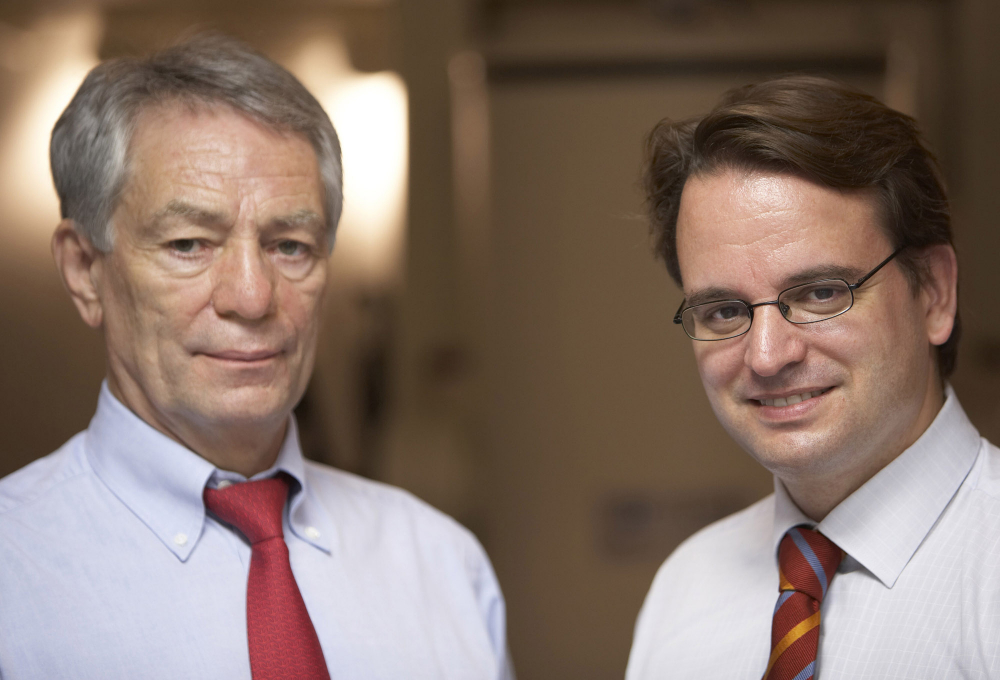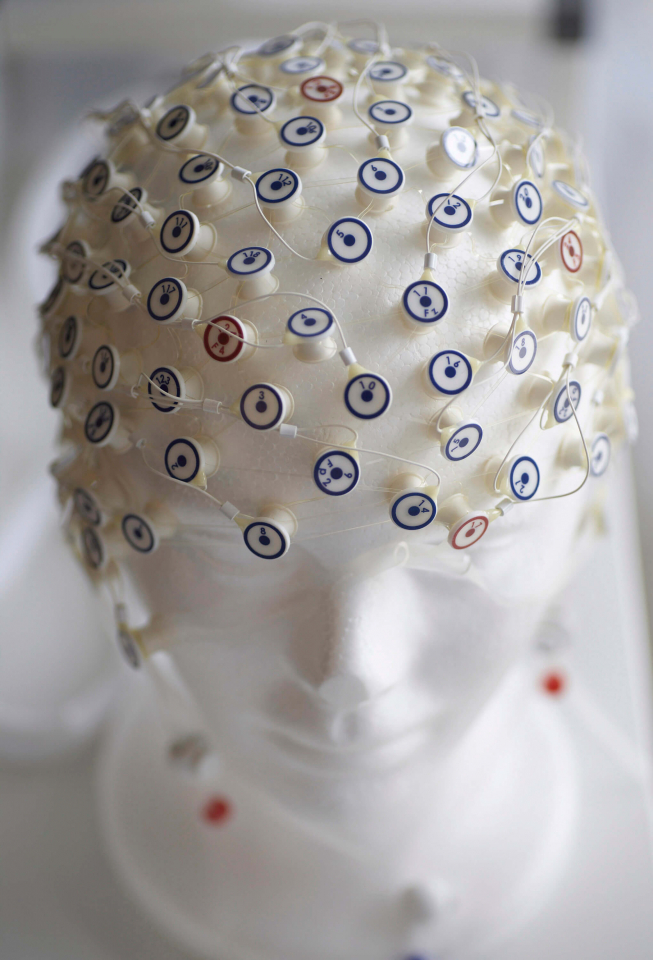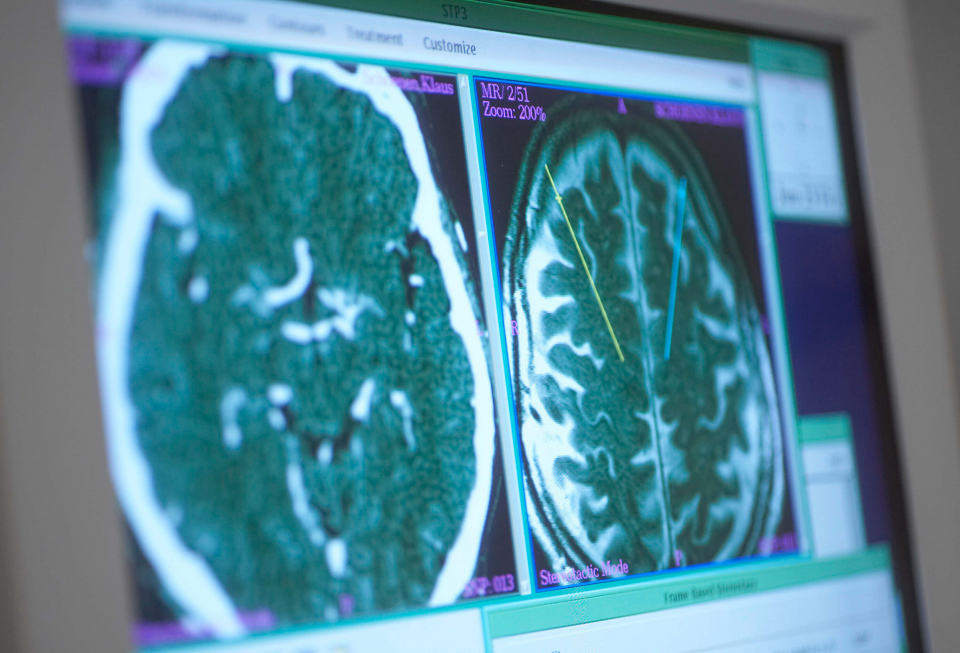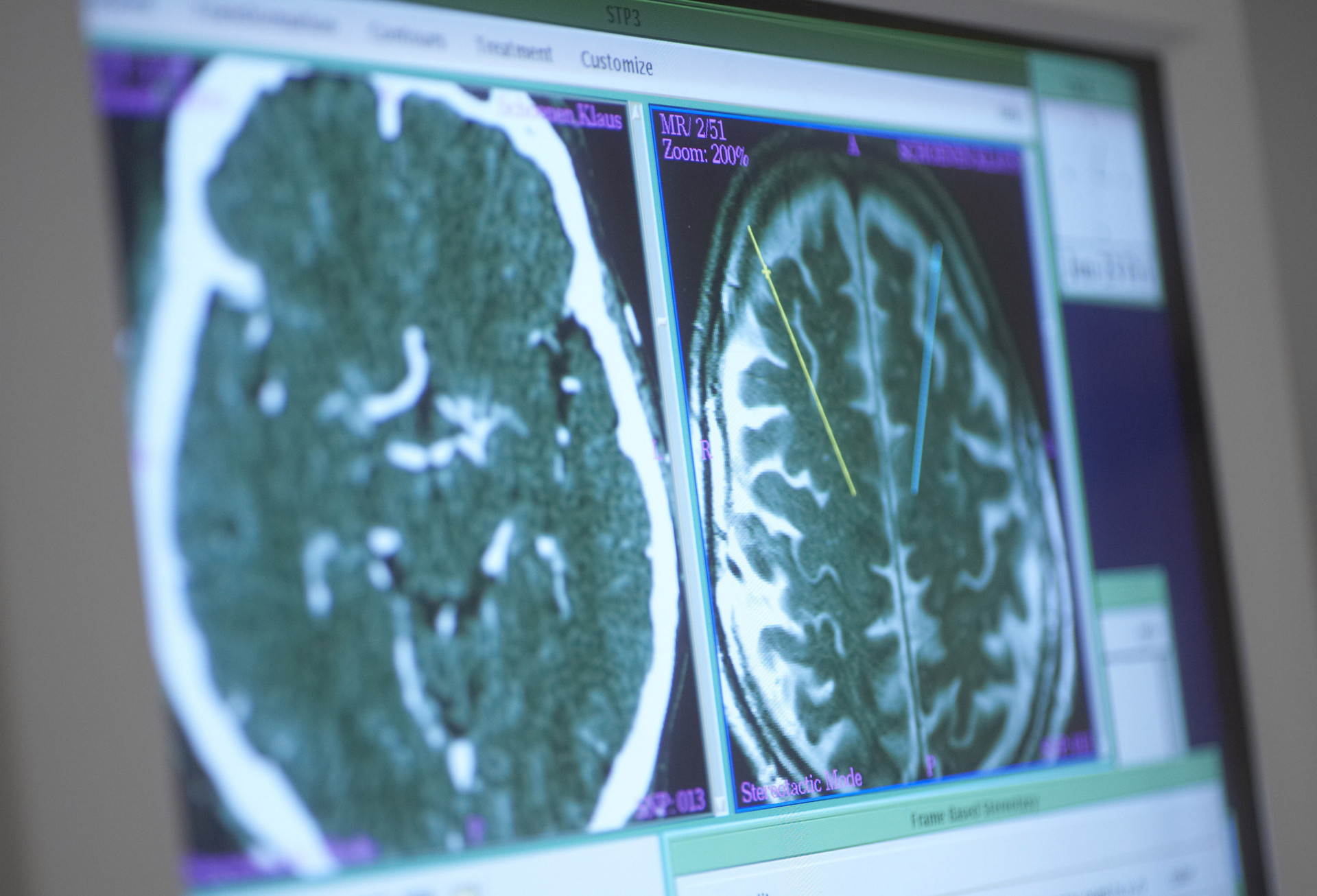
Nominee 2006
Hirnschrittmacher
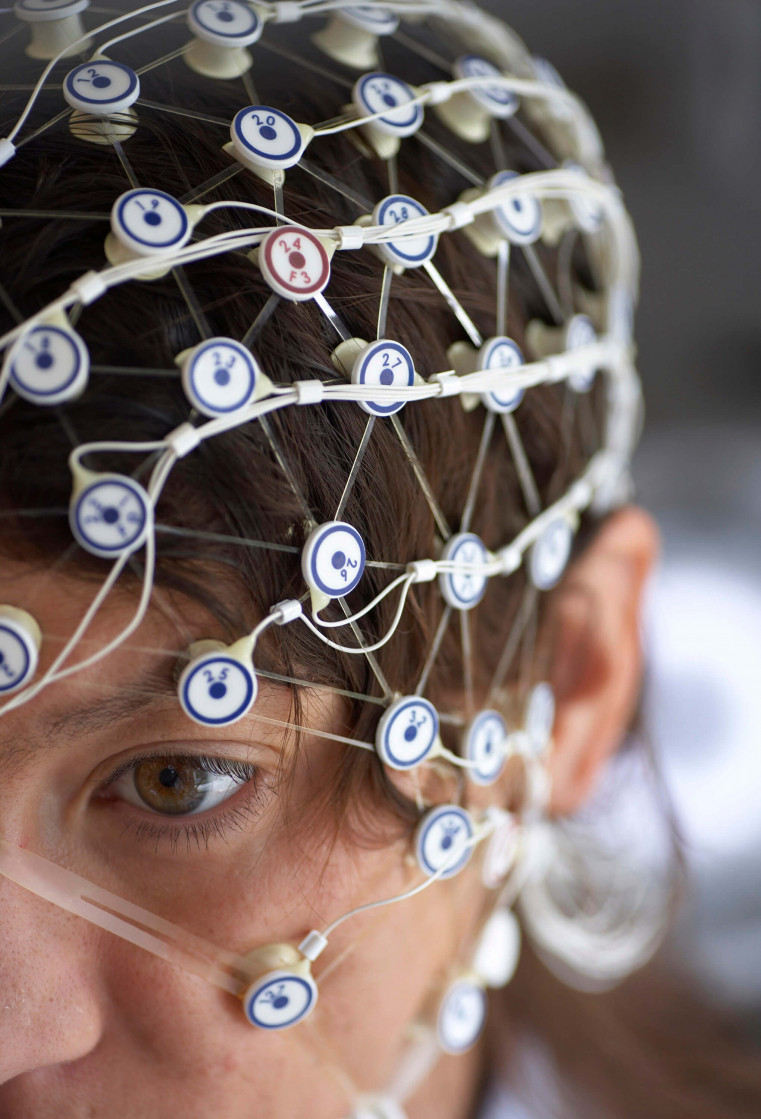
The answer is “yes, they can” thanks to a new technology for brain pacemakers developed by Peter A. Tass and Volker Sturm. Peter A. Tass is professor for Therapeutic Neurophysiology at the University of Cologne and coordinating director of the Virtual Institute for Neuromodulation at the Research Center Jülich. Volker Sturm is chair and director at the Clinic for Stereotaxis and Functional Neurosurgery at the University of Cologne.
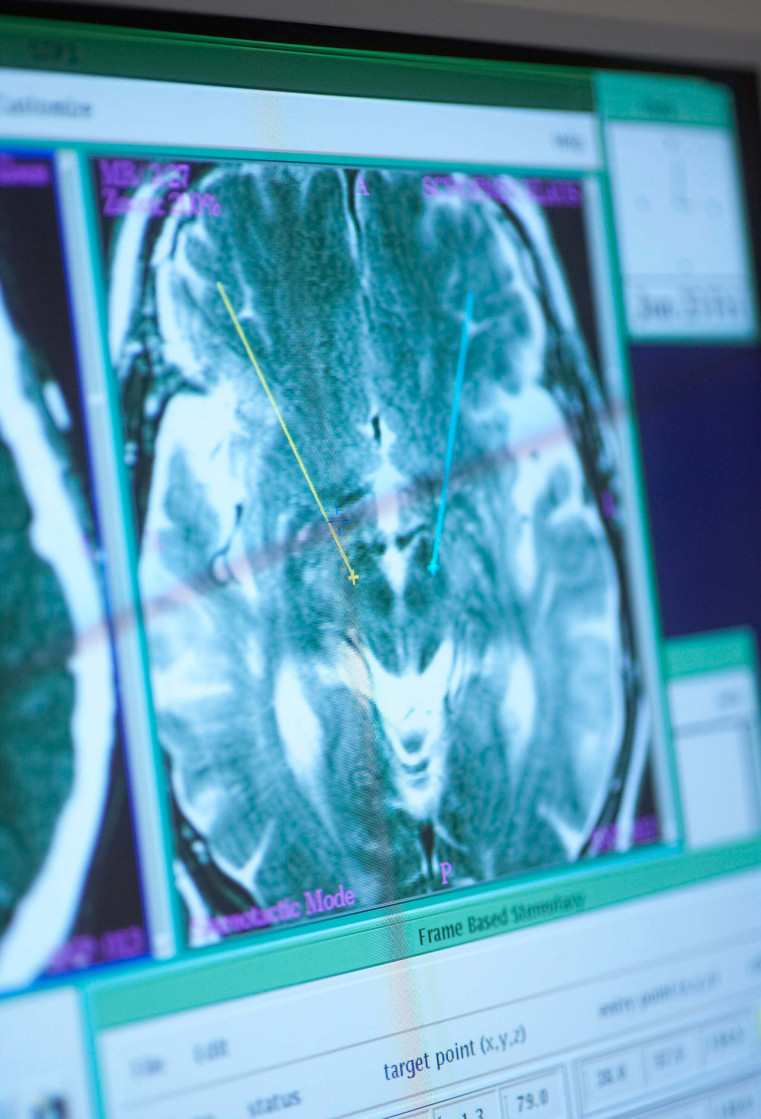
Nerve cells fire simultaneously
In Germany, around 400,000 people are affected by Parkinson’s. This disease is brought on by a malfunction of nerve cells in certain regions of the brain. Instead of firing erratically as they would in a healthy person, Morbus Parkinson causes neurons to send signals simultaneously and with all their might – they are pathologically active and synchronized.
more details
Resumes

Prof. Dr. med. Dr. rer. nat. Peter A. Tass
- 29.08.1963
- geboren in Ludwigsburg
- 1982
- Abitur
- 1982 – 1989
- Studium der Medizin an der Universität Ulm und der Ruprecht-Karls-Universität Heidelberg
- 1989
- Promotion zum Dr. med. an der Medizinischen Fakultät der Universität Ulm
- 1989 – 1993
- Diplomstudium in Mathematik und Promotionsstudium in Physik an der Universität Stuttgart
- 1993
- Promotion zum Dr. rer. nat./Physik an der Universität Stuttgart
- 1994 – 1999
- PostDoc in der Neurologischen Klinik der Heinrich-Heine-Universität Düsseldorf
- seit 1999
- Leiter Arbeitsgruppe Magnetenzephalographie und Hirnschrittmacher,
Institut für Medizin, Forschungszentrum Jülich in der Helmholtz- Gemeinschaft, Jülich - 2001
- Habilitation und venia legendi für das Fach Physiologie an der Universität Aachen
- seit 2002
- Professor für Therapeutische Neurophysiologie an der Universität zu Köln
- seit 2004
- Koordinierender Direktor des Virtuellen Instituts für Neuromodulation,
Forschungszentrum Jülich in der Helmholtz-Gemeinschaft, Jülich - 2005
- Gründung der ANM GmbH, Jülich
Gründungsgesellschafter, Wissenschaftlicher Leiter, Beiratsmitglied
Ehrungen:
- 2000
- Fritz-Winter-Preis
- 2004
- Technologiepreis der Freunde und Förderer des Forschungszentrums Jülich in der Helmholtz-Gemeinschaft, Jülich
- 2005
- Aufnahmen des Projektes „Innovative tiefe Hirnstimulation“ als Leitprojekt Masterplan Gesundheitswirtschaft Nordrhein-Westfalen
- 2005
- Wissenschaftspreis des Stifterverbandes für die Deutsche Wissenschaft
Erwin-Schrödinger-Preis der Helmholtz-Gemeinschaft

Prof. Dr. med. Volker Sturm
- 06.12.1943
- geboren in Heidelberg
- 1964
- Abitur
- 1971
- Promotion an der Medizinischen Fakultät der Ruprecht-Karls-Universität Heidelberg
- 1972 – 1974
- Assistenzarzt, Abt. für Neurochirurgie der Ruprecht-Karls-Universität Heidelberg
- 1975 – 1976
- Assistenzarzt, Abtlg. für Stereotaktische Neurochirurgie, Universität des Saarlandes, Homburg/Saar
- seit 1979
- Oberarzt, Abtlg. für Neurochirurgie der Ruprecht-Karls-Universität Heidelberg
- 1980
- Facharzt für Neurochirurgie
- 1981
- Habilitation und venia lengendi für das Fach Neurochirurgie an der Ruprecht-Karls-Universität Heidelberg
- 1979 – 1983
- Gastaufenthalte am Karolinska Institut Stockholm, Schweden
- 1980
- Gastwissenschaftler am Hospital Ste. Anne Paris, Frankreich
- seit 1983
- Professor für Stereotaktische Neurochirurgie an der Ruprecht-Karls- Universität Heidelberg
- seit 1988
- Lehrstuhlinhaber und Direktor an der Klinik für Stereotaxie und Funktionelle Neurochirurgie an der Universität zu Köln
- 1995
- Firmenausgründung der MRC Systems GmbH Heidelberg
- seit 2001
- zusätzlich Direktor der Klinik für Steroetaxie und Funktionelle Neurochirugie am International Neurosciene Institute, Hannover
- 2001
- Gründung der CEVEC GmbH, Köln
- seit 2005
- zusätzlich Lehrstuhlinhaber am Leibniz Institut für Neurobiologie, Magdeburg, Arbeitsgruppe Steroetaktische Neuromodulation
- 2005
- Gründung der AMN GmbH, Jülich
Gründungsgesellschafter, Klinischer Leiter Neurochirurgie, Beiratsmitglied
Ehrungen:
- 1986
- Meyenburg-Preis für hervorragende Leistungen auf dem Gebiet der Krebsforschung
- 1990
- Claudius-Galenus-Preis
- 2004
- Ehrenmitglied der Deutschen Gesellschaft für Medizinphysik
- 2005
- Wissenschaftspreis des Stifterverbandes für die Deutsche Wissenschaft
Erwin-Schrödinger-Preis der Helmholtz-Gemeinschaft
Contact
Spokesperson
Prof. Dr. med. Dr. rer. nat. Peter A. Tass
Leiter Arbeitsgruppe Magnetenzephalographie und Hirnschrittmacher
Institut für Medizin
Forschungszentrum Jülich in der Helmholtz-Gemeinschaft
Leo-Brandt-Str.
52425 Jülich
Tel.: +49 (0) 2461 / 61 20 87
Fax: +49 (0) 2461 / 61 28 20
E-Mail: p.tass@fz-juelich.de
Web: www.fz-juelich.de
Press
Dr. Angela Lindner
Leitung Öffentlichkeitsarbeit und Pressesprecherin
Forschungszentrum Jülich in der Helmholtz-Gemeinschaft
52425 Jülich
Tel.: +49 (0) 2461 / 61 46 61
Fax: +49 (0) 2461 / 61 46 66
E-Mail: a.lindner@fz-juelich.de
Web: www.fz-juelich.de
Eugen Berlev
Pressesprecher
Klinikum der Universität zu Köln
Presse- und Öffentlichkeitsarbeit
Kerpener Str. 62
50937 Köln
Tel.: +49 (0) 221 / 47 85 745
Fax: +49 (0) 221 / 47 85 151
E-Mail: Pressestelle@uk-koeln.de
Web: www.uk-koeln.de
A description provided by the institutes and companies regarding their nominated projects
Parkinson’s disease is one of the most common disorders of the nervous system. In Germany, there are officially some 150,000 Parkinson’s patients. Estimates, however, assume that between 250,000 to 400,000 people are affected by the disease. The nerve cells of Parkinson’s patients fire simultaneously, i.e. synchronously instead of specifically and in sequence. This causes the typical tremor experienced by most patients.
Treatment involving a brain pacemaker is the standard form of therapy for patients with severe motor disturbances that are not treatable with medication, such as Parkinson’s disease or essential tremor. In this form of treatment, electrodes are implanted in the regions of the brain in which groups of diseased nerve cells synchronously fire. By applying continuous electrical stimulation, the activity of the nerve cells in the targeted regions is dramatically changed and suppressed. Many patients have been helped by the new treatment, but it does have its limits. A significant number of patients experienced side effects or failed to respond to the treatment, in some cases, the therapeutic effect of the treatment decreased or even entirely disappeared.
Prof. Peter Tass and Prof. Volker Sturm have developed an innovative brain pacemaker that is much more effective in counteracting the actual disease processes and easier on the patient. The electrical pulses are dosed as needed, namely only when brain cells begin to fire abnormally at the same time. The action of the nerve cells in the overactive regions of the brain is thus not suppressed, but purposefully desynchronized. To do so, professors Sturm and Tass simulated the affected groups of nerve cells in mathematical models and developed very efficient stimulation techniques using methods taken from mathematics and physics. The development of the conventional brain pacemaker was a result of random observations during neurosurgery.
The unique effect of the new brain pacemaker is based on its exploitation of basic regularities of the nervous system – dynamic self-organizational principles and set rules of learning – in order to obtain the greatest effect with the least impact on the brain. The new brain pacemaker desynchronizes – i.e. it selectively counteracts the diseased synchronisation processes in the affected nerve cell populations. In addition to a suppression of symptoms that is easy on the patient, the effect of the new brain pacemaker aims to allow the brain to heal by helping it through stimulation to specifically unlearn the diseased interactions in the affected groups of nerve cells.
In intra-operative test stimulations, i.e. during implantation of electrodes in patients with pathological tremor, such as Parkinson’s disease, essential tremor and tremor associated with multiple sclerosis, the effect was clearly more effective and easier on the patient compared to conventional brain pacemakers. The desynchronizing effect of the new brain pacemaker opens up entirely new treatment options for a wide range of neurological and psychiatric disorders characterized by excessive synchronisation processes, specifically motor disturbances, functional impairment following stroke, epilepsy, or severe psychiatric disorders that are not otherwise treatable.
The work of professors Sturm and Tass has taken deep brain stimulation from the stage of empirical, random development to a state-of-the-art stage of model-based design of highly effective stimulation and emulation methods using physics and nonlinear mathematics.
Currently, patients who have received electrode, but not yet generator implants are successfully stimulated during the first week after the operation using the new method. In the next stage, the new brain pacemaker will be further improved and miniaturized. According to schedule, it is to be ready for clinical use within the next three years.
Professors Sturm and Tass also founded a company in 2005 that should make it possible to treat a very large number of patients by the year 2009. Their work has shown that highly effective and mild methods of treatment can be developed using modern mathematics and physics for the benefit not only of a large number of affected individuals, but also to create jobs.
Research Centre Jülich
The Research Centre Jülich with its 4,300 employees is the largest multi-disciplinary research centre in Europe and one of the 15 Helmholtz Research Centres in Germany. Its research topics reflect the great challenges facing society:
- securing food and health for a growing global population,
- the providing and solution-oriented linking of vast quantities of information,
- the responsible use of the natural resources of the environment,
- the sustainable and comprehensive supply of energy.
The centre also makes long-term contributions to basic research in science and technology and develops specific technological applications for industry. Typical of the key competence at Jülich is its focus on physics combined with scientific calculations using supercomputers.
In 2006, to celebrate the anniversary of its founding, the Research Centre Jülich has concentrated on focusing its unique profile. The Research Centre has made strategic alliances with other centres belonging to the Helmholtz Association as well as with universities, businesses and research institutions worldwide.
www.fz-juelich.de
Helmholtz Association
The Helmholtz Association with its 15 research centres is Germany’s largest scientific research organization. The mission of the Helmholtz Association is to make a significant contribution to meeting the challenges and solving pressing problems in the fields of Energy, Earth and the Environment, Health, Transport and Space, Key Technologies, and the Structure of Matter.
www.helmholtz.de
The University of Cologne
The Clinic of the University of Cologne is home to Germany’s only chair for Stereotaxis. Thanks to the dedicated financing efforts of the state government of North Rhine-Westphalia (NRW), unique opportunities have been created. The clinic has three operating theatres, including a magnetic resonance tomography for stereotactic operative procedures as well as state-of-the-art computer equipment. The focus of the clinic includes neuro-modulating methods, in particular deep brain stimulation for motor dysfunction and psychiatric disorders that are not treatable using conventional conservative methods. The clinic for stereotaxis is one of the world’s most experienced clinics in this field. The world’s largest series of Parkinson’s patients, for example, was operated on in Cologne.
Another of the clinic’s focuses is operative pain treatment and stereotactic tumor therapy (implantation of radionuclides, X-ray contact therapy for brain tumors, irradiation surgery with linear acceleration). Scientific applications are development of stereotactic radiation methods for tumors and specifically the development of neuromodulatory methods through deep brain stimulation. The Clinic for Stereotaxis conducts these research programmes in close cooperation with the Research Centre Jülich, the Leibnitz Institute for Neurobiology in Magdeburg, as well as with neurological and psychiatric university clinics, in particular in NRW.
The right to nominate outstanding achievements for the German Future Prize is incumbent on leading German institutions in science and industry as well as foundations.
The project “Development of an innovative brain pacemaker using methods taken from random physics and nonlinear mathematics” was nominated by the Helmholtz Association.
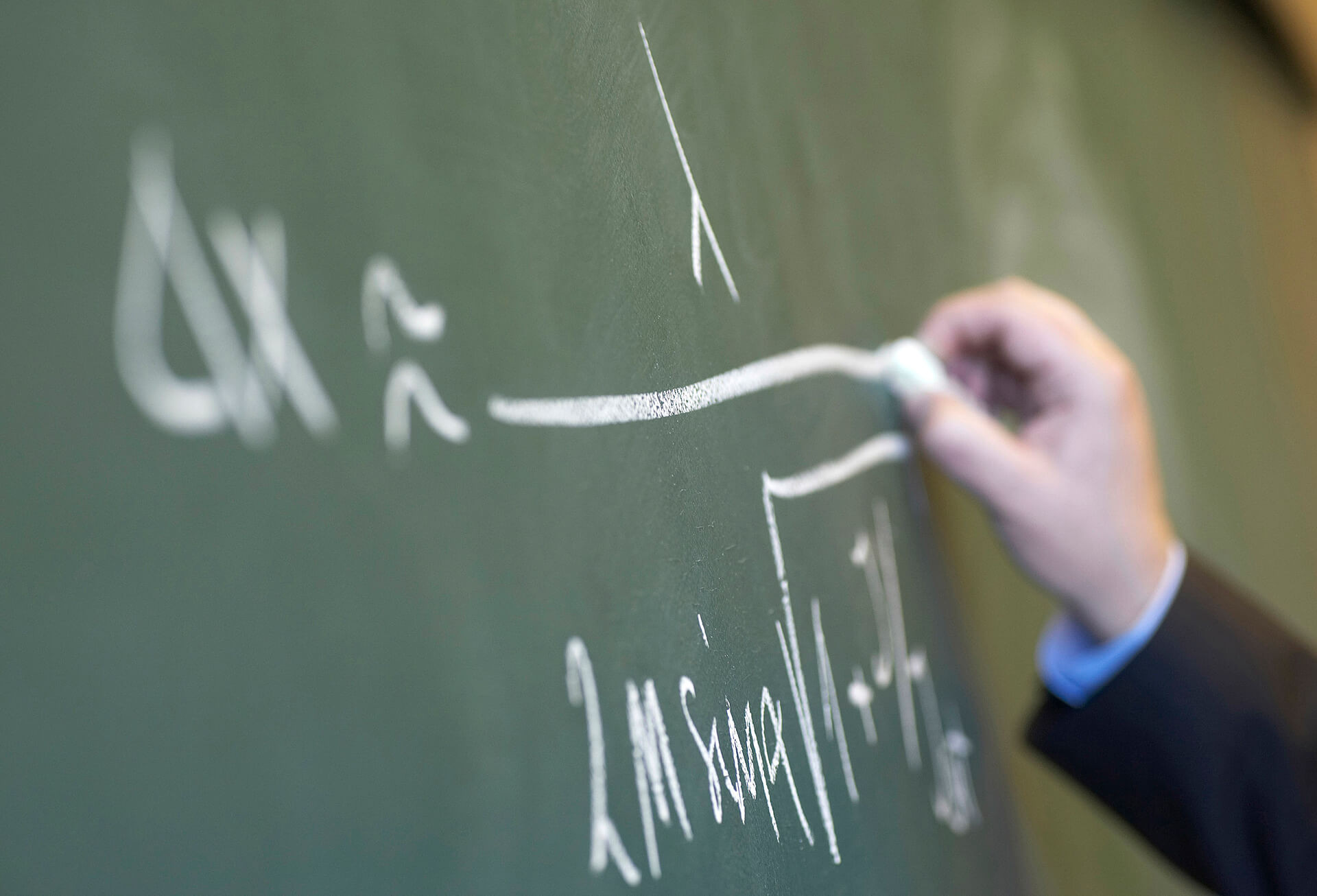

 Gebärdensprache
Gebärdensprache
 Leichte Sprache
Leichte Sprache


